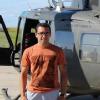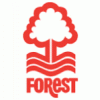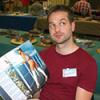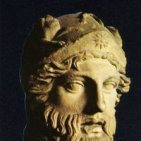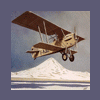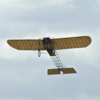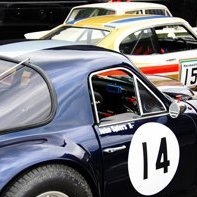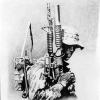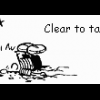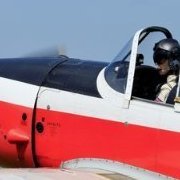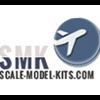Search the Community
Showing results for tags 'Heller'.
-
Looking to build a couple of the Heller kits of the Canadair 415 but can find little about the accuracy of the kit. I remember reading somewhere, sometime, that the position of the engines is correct for the 215 but that the 415's engines should be mounted slightly further outboard - does anyone know if this is correct? Many thanks
- 20 replies
-
- firebomber
- 1/72nd
-
(and 2 more)
Tagged with:
-
For Christmas, I gave myself a present. It was walk into the stash, pick out a random kit and just build it. I will have some modeling time over the Christmas holiday and I just want to enjoy it with a no frills, out of the box, no particular reason build. Afterwards, it is group builds and back to clearing the shelves of doom. Now what I ended up choosing was the Heller 1/24 Fw190 A-5. I will be doing the box art version. I think this is a reboxing of the Airfix kit. I am not sure when I bought this kit, but it must have been a used kit either through my local modeling shop or at a trade stand. The sprues are not in plastic bags and many of the parts are loose and it looks like they have been cut from the sprue. I just hope it is all intact. I picked it as the fun build because it looked fun, the box was really beginning to deteriorate and it would create some space in the stash. First up, the cockpit. Looks a bit sparse, but the IP detail looks like it will do. The parts are put together, painted and then weathered a tiny bit. I did add a couple of placards, but everything else is just out of the box. I was really impressed with the instruments as they came up quite nice and are just the kit plastic highlighted with metallic silver rather than white. Next up the engine. And did I mention the kit parts do have a bit of flash evident? The engine is assembled. I didn’t paint it or try to tackle the many gaps and mold seams as this kit will be buttoned up. I have some Eduard kits, Trumpeter and ZM kits that will be open with more detail. But, I had to assemble the engine as it is the mounting system for the propeller. What is missing from the kit are some seatbelts. I did plan to have the canopy open and a kit this big really needs some seatbelts. I had a choice between Eduard and RB seat belts, but decided to go with the Eduard ones as I will use the RB ones on a Trumpeter 109 I have in the planning stages (Gunter Rall’s plane). These look marvelous on the sprue; I hope my fat fingers can get them together. The side seatbelts are started first. Man the detail on these are nice! But the design, I wonder about. In the picture above, the instructions have you place the small belt portion over that lovely white manufacturing label and it will be hidden from view forever. Why bother with that detail? Oh well, it is done along with the rest of this side belt parts. The other side belt is started Then the first shoulder belt is built And the second is built Now, they have to be bent and manipulated to fit into the seat and cockpit. Before the fuselage can be buttoned up, the rudder and tail wheel assembly has to be tackled. I started with the rudder; and that is where one of the problems with this kit and its age reared its ugly head. In addition to the flash that is present on a lot of parts, the plastic for this kit is very brittle. Not just a little cantankerous, but if you look at it wrong and sneeze in its vicinity, parts break. Removing them from the sprue is a chore. When I went to remove the rudder parts, one of the halves was already broken. Given its size, you wouldn’t think it would be so fragile. So the pieces are put together and the broken part is not too evident and some filler will take care of it. Now, with the tail wheel parts, that was another matter where the kit plastic was not my friend. Here are the plastic parts; absent is the vinyl tire. Did I mention there was a bit of flash? And when cleaning the flash, the main tail wheel strut broke. Now the instructions would have you carefully bend the u shaped piece to straddle the main strut and fit in some holes. Due to how brittle the rest of the parts are, I fully expected this part to snap in two when I was putting it on the main tail wheel. It did not. Surprise, though, what did happen was the pressure the u shaped piece put on the main tail wheel strut caused it to break apart where the holes lined up as I was giving the parts their base silver paint. So now, I have to piece together the tail wheel strut in 3 different places. I have very low expectations the undercarriage will last holding this kit upright for any extended period of time. The construction process to redo the tail wheel starts. And finally, I got everything to line up and it has some semblance of strength. However, most of the strength is probably coming from the copious amounts of superglue that now make up the tail wheel strut! With the cockpit, engine, rudder and tail wheel sub-assemblies done, each is put in its place in the starboard fuselage half and the the two fuselage halves are buttoned up. I am glad I spent so much time working on the IP panel as with its position in the recesses of the cockpit coupled with the dark grey interior paint, it is so visible. While I let the fuselage halves harden, I move on to the wing. It consists of a one piece lower wing to which the two upper wings are attached. Some items need to be placed in the lower wing before the upper wing halves are attached. The wing spars used to block off the wheel wells also act as the base for the main undercarriage to be attached. Also, there is a provision for the wing cannons to be displayed. Since this kit will be built with only the canopy left open, I only have to worry about the inner cannons that will show in the wheel well. However, the outer cannons will have to be redone as the brittle plastic struck again. As I was removing the outer cannon barrels from the sprue, one broke in two. I will now replace these with metal tubing. As for the inner wing cannon, I give me no chance in trying to drill out the barrels, so they are cut off. I then very carefully, saying a silent prayer, drill out the cannon body parts so metal tubing can be insert later. This actually goes quite well and I am surprised. To make sure the cannon bodies line up correctly I temporarily insert the metal tubing. Next up, the main undercarriage has to be attached to the wing spar. Did I mention there was flash on the parts? The first strut went in fine and there were no problems. The second strut, as I was pushing the attachment peg through the main wing spar, I must have breathed incorrectly and it broke off. Did I also mention how brittle the plastic is? The broken stub was removed and a hole drilled in the strut so some metal rod could be used. This went well, but the support piece broke off and that had to be lined up and a new metal attachment point for that made as well. After some finagling, chanting and a couple of small curses, I got the broken strut to line up at the same angles as the other strut. I know the 190 gear doesn’t extend perpendicular to the ground, but I think the angle the kit has for the main undercarriage is a tad overdone. I will wait to see how it lines up after the wheels are put on but I think some adjustments will have to be made to the angle of the main strut to the wing. The wing flaps have a “working” feature, so this is needed to be done prior to the upper wing halves being placed on the lower wing. Before I join the wings to the fuselage, I notice the exhausts area molded into the lower wing. In a kit this size, they look funny if not opened up and these are portrayed in the kit pieces as solid. I break out the drill set again and will attempt to drill the exhausts out on the lower wing. This goes relatively okay with only a small piece breaking off due to the plastic’s brittleness. I get curious and decide to see how the side exhausts will be portrayed. Yeah, this is not good. I guess I will create some sort of metal piping that is a little better looking than the kit part. The wings are now put together and set aside to dry. This is where I think I will stop for a while. Next up, I get to see how well the wing to fuselage joint is. I hoping for the best. As always, all comments are welcome.
-
Hi fellow modellers! This is my first post here. For now, I only have pictures of my models finished, so it´s a kind of introduction for me. This is the old heller Su-27 UB. The kit has many fit problems, but overall is very accurate and represents well the shape and dimensions of the Flanker. I tried to make a faded look and I think the result was convincing. the only aftermarket were resin K-36 seats and metal pitot tube. I hope you like it, It was a fun build! Any commentaries and critics are welcomed!!! Best regards from Uruguay! Ignacio
- 28 replies
-
- 21
-

-
Hi, here's my latest finished build. Just a quick SFTB with Max decals. I still can't get canopies to be masked and painted right. Nice easy build, not my best but looks ok from a distance! FF
-
This will be my first ever aircraft WIP. It follows on from some prompting, coercing and downright bullying from Nigel and company. My last few builds (3 in the SciFi forum, and one in the vehicle forum) left me somewhat battle scarred and traumatized and I needed an easy, trouble free build to relax me after pulling my hair out in the last few builds. I have wanted to do this aircraft for a while but it got pushed off to the side and overtaken by a couple of SciFi builds. Now it is time to give it the some attention. Not knowing much about the Dauphin, I looked at what was available and the closest kit to the aircraft I wanted to replicate appeared to be the old Heller kit. I've had it in the stash for some time and had actually started gluing a few pieces together a while back. While the kit has been neglected sitting on a shelf, I have been building a folder of reference photo's. Of course, once I really started looking at the photo's I realized there was quite a lot of work to do to the Heller kit to make it represent the aircraft I wanted to model. Starting with this screen shot of one of the Heller boxings..... Rotor Head: Kit is very basic and some scratch building will be needed to make it look better. Aerial faces wrong way on kit (easy fix) and the intake looks out of scale Some scratch building required in this area for bits hanging off aircraft Actual aircraft does not have spats. Heller kit has wheels molded into spats, so will have to find some alternative, and scratch build undercarriage More scratch building required to replicate more bits hanging off real aircraft. Heller kit tail comes to a knife edge - real aircraft has flat, blunt tail edge. Fenestron linkage is wrong Exhausts are completely incorrect. Kit exhausts are parallel with each other whereas the real aircraft exhausts are angled away from each other as they exit the aircraft. Additionally, the cowling around the exhausts on the real aircraft is markedly different from the kit profile. More scratch building required. Vents and access panels on kit cowling is different than the aircraft I am basing this build on. As mentioned earlier, this was supposed to be an easy, trouble free and relaxed build, and before I've even started, I have found a whole batch of things which need changed/fixed. Such is life I guess. Initial impressions of the kit are mixed. There is some finely molded detail which looks good, but on the other hand, there are raised panel lines (which, tbh, I really don't mind), but the biggest issue I have found so far, is the lack of positive alignment features for many of the parts. I have a few ideas of how to model the aircraft, (doors open, winch fitted etc.) but haven't fixed on a particular mode yet. As far as I am aware, there is no photo etch or upgrade parts available for this particular kit, so I'll have to make do with what I have. I should mention that I plan on doing aircraft HKG-1 of the RHKAAF around the 1982 time frame. Decals don't exist so I'll need to figure out how to do my own, and I think the paint job, though relatively simple, will be extremely difficult to get accurate. If anyone knows of a more accurate kit, please speak up before I commit myself too far down this tortuous path
-
Mirage 2000C Cockpit, Intakes & Control Surfaces sets for Heller Kit 1:72 Pavla Hellers Mirage 2000C Kit has been around for a while now, as with other kits the cockpit and seats are limited by injection moulding in this scale. This resin cockpit is designed to replace the original kit item in its entirety. Due to the front wheel bay being on the bottom of the cockpit Pavla have moulded this from the with minimal clan up required. The set is comprised of a cockpit tub, complete with sidewalls and consoles, a replacement ejection seat, instrument panel, and control levers. All of the resin parts are nicely cast and crisply detailed, and there are no bubbles or casting flaws in evidence. The control and instrument details are nicely rendered, and the straps on the ejection seats are very realistically done. A Vac form canopy is provided; which is available as a part in its own right. Cockpit Set Canopy Also offered by Pavla for the kit are a set of intakes which include FOD guards. These are well moulded and come with the separate fence which is attached to the side of the intake. Intakes Another item for the Mirage 2000C is a set of control surfaces. Flaps and flap actuators are provided here. Control Surfaces Conclusion The Heller kit is a great kit, however it will benefit from these sets. Whether you just want a nice cockpit, covered intakes; or different control surfaces. You could go the whole hog with all of them! Either way these details from Pavla will enhance your kit. Highly recommended. Review samples courtesy of
-
- 1
-

-
- Heller
- Mirage 2000C
-
(and 1 more)
Tagged with:
-
My latest: Heller’s old 1/48 Mirage 2000C. This has had a fair bit of other stuff thrown at it. You can read about it in my separate hints and tips here: http://www.britmodeller.com/forums/index.php?/topic/234968266-heller-mirage-2000c-with-pavla-upgrades-hints-tips/ - but, to sum up, I’ve added a Pavla cockpit, Pavla control surfaces, Pavla wheels, a Master pitot probe, and an Eduard tank very kindly supplied by horrido109. The camouflage is the specific Mirage blue-greys from Xtracolor, brushed on as always, and the usual variety of this and that for the rest. I’ve drawn in the panel lines but done no weathering. So far as I can tell, apart from the centreline tank these things stay pretty clean - or at least they did back in 1991. Not like the two-seat attack variants. Markings are from the kit: EC 2/5 Ile de France, at Orange. The decals were twenty years old and most went on flawlessly with only a little help from Microsol and Klear. Apart from a slight register problem, I was very impressed. But can anyone spot where they went wrong?
- 20 replies
-
- 17
-

-
I've just posted my Mirage 2000 here: http://www.britmodeller.com/forums/index.php?/topic/234968265-dassault-mirage-2000c/ in Ready for Inspection. Here are some tips for building it, and the Pavla parts I added, in the hope that someone might find them useful. Cockpit Pavla make a cockpit for the Heller kit, but that’s not what I had; I had the one for the Kinetic kit as a review sample. This is very similar but, of course, designed for a slightly different piece of plastic. Still, it’s a better idea than the NeOmega cockpit, which is designed for the old Italeri kit (not the newer Kinetic rebox). Large differences in the way it fits to the nosegear well would have caused a lot of trouble making it fit. (I’m selling it if anyone’s interested!) The cockpit for Kinetic can be made to fit Heller with a lot of sanding of both plastic and resin. This probably applies if you’re putting in a Kinetic kit, of course, but differently. I think I took out too little plastic, which has made my cockpit narrow. I had to mount the side-walls a bit far in: they’re meant to sit on ledges next to the side consoles, while mine are just about on top of them. On one side the ledge was a little too small anyway, so you might want to watch for this. I ended up having to shave off the bottoms of the side-walls to give them room to sit above the buttons and switches. Though it doesn’t really show. Even allowing for this, the fit’s not brilliant behind the seat; but that can be concealed under the rear bow of the canopy. The coaming is much nicer than NeOmega’s (this set is almost worth having for that alone) but, again, it’s a tight squeeze. No matter which set you have, be prepared to shave off corners and to have to remove more kit plastic than you realised. Painting instructions are a bit haphazard. As always, check your references (and bear in mind that not all seats found in a Mirage 2000 use the same colours). Canopy This was the single trickiest stage of the whole build. The Pavla cockpit set includes a vac-formed acetate canopy. This has its attractions: thinner, reasonably clear, separate canopy and windscreen. The detail is a bit soft but it’s on a par with the kit’s. Neither Heller’s nor Pavla’s parts fitted. In part this must be down to my not having trimmed the cockpit tub enough. The effect on the cockpit parts themselves was to pinch in the sides (as above) but the effect on the fuselage parts was to spread them slightly. In the end I pressed on with Pavla. Because neither Pavla nor Heller supplied an actuator, I wanted to leave the canopy shut while allowing the cockpit to be seen, and Pavla’s problems were more manageable. In particular, I knew it would need some flexing and poking to make it fit, which acetate could take better than polystyrene. My diagnosis notwithstanding, I don’t think all the bother was down to me. This is because both canopy and windscreen were wider than the fuselage at the bottom front corners, and narrower at the bottom rear. That can’t have been caused by a wide fuselage. The windscreen also sat too high at the front. This could have been addressed by trimming the front end, but that would have removed the frame and its bolt details; trimming the other end would have removed the rear frame. The only remedy I could find was to plonk it on, then fair in the front end by building up two thin plies of plastic sheet and slopping on Mr Dissolved Putty. If you’re forced to do this, take care over the mounting for the FR probe. If you can leave some plastic showing through the filler, it will be a lot easier to attach. The canopy tended to a different curve from the windscreen - it seemed twisted to the right and so was too high on that side and too low on the other. The soft detail also made it hard to know where there was excess acetate, and on reflection I probably trimmed away a little less canopy than I should have. It might have fitted better but for that. Well, anyway, I muddled through and bodged most of the resulting dips and gaps. The filler here was Clearfix because, as well as all that, the rear frame of the canopy wouldn’t reach the fuselage spine at the bottom corners - not only too narrow but too short. There’s some swarf inside the canopy. I suspect this is not so much unavoidable as obligatory. There’s also some glue. I’d have preferred to use PVA but I knew it wouldn’t stand up to the manipulation. And, despite a coat of Klear inside and out, there was enough CA to create some fogging. The lesson is to use more Klear - I couldn’t have avoided using that much glue. On balance I’d have preferred a one-piece vac-formed canopy with the option of separating the pieces. Who knows how it might have fitted, but at least there wouldn’t have been a mismatch between canopy and windscreen. Control surfaces Pavla’s elevons are nice to have because they show the hinge covers better than the kit parts and have finer external hinges on the underside. Those hinges are how the elevons attach to the wing. But there’s a problem. To fit the elevons you remove the kit parts by sawing along the hinge line. To avoid steps from the remains of the engraved line, you need to remove all of it. This effectively puts the mounting line for the new parts too far forward. On the real thing, when the elevons droop there’s not much space between their top surfaces and the fixed structure. Pavla’s seem to have dropped slightly. They sit low, leaving a large space behind the wing. It’s not a gap - you can’t see daylight through it - but it’s not the correct snug fit either. I suppose I might have attached the hinges in the wrong place. But I followed Pavla’s incised marks on the elevons. And, with the geometry, it doesn’t seem possible to fix it by mounting the hinges further back. That would tend to raise the elevons, but it wouldn’t leave enough room for their leading edge, which is already in contact with the wing. My solution was to attach a length of 1.5mm L-section strip along the wing trailing edge. This give a false impression of how the edge looks, but it covers that space reasonably well. I suspect it also puts back a little bit of chord lost because of Heller’s slightly coarse hinge line. Where it’s not all that easy to fiddle is the wing root, where the Kármánn fairing starts. You can create the curve by building it up with thin plastic, or by leaving the end of the L-section free and bending it before you glue it in separately. I ended up doing both, on opposite sides - still not sure why. One small mystery is that Pavla’s hinges are all slightly inboard of the kit ones. At the outboard end, Pavla also gives you replacement wingtips with slightly better rendered RWR receivers. I discovered only on attaching them that these are mounted nose-up, which isn’t right. I can’t think of a correction. Another feature is that the rear of these bits has a little recess to take the nose of that section of elevon. This is nice to have, but no earthly use when the rest of the elevon hinge has to be sawn away and there’s no replacement structure. I defy anyone to create a hinge line that looks right and still allows room for the elevons. If you’re doing what I did with covering the elevon hinge line, bear in mind that the wingtips are slightly longer in chord than the ends of the wings after you’ve cut away the kit elevons. I should have extended that L-shaped strip into a narrower bit on the wingtip. The antenna fairing is partly on the wingtip and partly on the elevon, so you’ll want to ensure they line up. Judicious sanding of the inner end of the elevon or the wing root fairing should take care of it. Also, the nose of the elevon portion needs chamfering, or it will foul the tail of the wingtip portion. Finally, this set includes replacement rear ends for the Kármánn fairings (the bits inboard of the elevons that lie alongside the rear fuselage). I’m not sure why. Neither kit part nor replacement is a brilliant fit and there’s not much to choose in the sharpness of their edges. This Pavla set doesn’t include the fairings with the Spirale dispensers. The kit does - well, sort of, they’re pretty coarse. The only way to get better ones is to buy Pavla’s control surfaces set for the later Kinetic Mirages - eg the 2000D. Two more small tips. The outboard pylons are wrongly shaped at the rear end and will foul the elevons; and the rear end of the rail, where the Magics attach, fouls their rear fins. A little filing is needed (or the Pavla pylon set). On one of my elevons there was also a slight bend. My attempt to flex it back snapped it, but that wasn’t a problem as it was along the panel line and the two halves can be made to marry up again. If I hadn’t also snapped a hinge, I might have done the same on the other side. Intakes These are a shocking fit. Your goal is to ensure that the leading edge of the splitter plate is flush with the intake lip. As designed, the kit will probably make it protrude slightly. There’s a choice of ways to address this. None is “right” in the sense of minimising trouble; your best bet is to dry-fit, see out where the gaps are, and decide which of them you least fancy trying to fix. Personally I fitted the intakes after the wing, contrary to the instructions. This seemed to make the gaps easier to deal with. But, as I should have expected, it all changed between dry-fit and final fit, and there’s packing everywhere. Having said that, I still don’t think attaching them to the fuselage first would have been significantly better. The intake strakes are far too fat. But they fit into plain holes, directly to the outer surface of the intakes, so you can thin them to your heart’s content. A common feature of Heller kits is that the locating pins are smaller than the corresponding holes*, so a bit of filling will be needed too. Be warned that your strakes may actually be fatter towards the ends, in defiance of all that we think we know about mould design. * if you think this is bad, you should see the pitot heads. Undercarriage The undercarriage legs are fairly sturdy and shouldn’t need replacing for strength. But there are problems. The retraction struts on the maingear fit poorly to the legs and have no location at all in the wells. You can brace them well enough but they’re just touching, with no obvious reason to be there. The same goes for the inner doors. The nosegear arrangement, as assembled, leaves the retraction strut floating free. It should attach at the top front corner of the well - still no proper detail there, but at least the location would be right. But it’s too short and barely reaches the lip of the well. If you try to get the leg raked slightly aft as it ought to be, the strut misses the well altogether. On reflection I think this is because the leg is slightly too long, or at least its location points in the well are too low. I realised this far, far too late. All the wells are very plain. You can hide a lot by leaving all the larger doors shut, as is the norm on the ground. But even then a little detail in the outer portions of the maingear wells is worth adding. NB: I don’t think the inner doors are curved to match the underside. My solution was to mount them ajar, which is also seen on the ground. The roof of the maingear well is mostly on the wing parts, but one slice doesn’t appear until you attach the wing to the fuselage - it’s under the wing root fairing. There will be gaps. The fuselage section is the right depth on the outer side, but it’s too shallow and too narrow on the inner side. Even with the doors fully shut, these gaps can be seen, so they’ll need fixing. The small doors to either side of the nosegear fit poorly. The curved hinges are quite nice, but they foul the nosegear leg. File and fit to taste. Overall, I’d say it wouldn’t be a bad idea to seek replacement undercarriage and wells. I love those resin wheels, though. My cavil about the brake actuators is trivial compared with the overall effect. VOR aerials These mount to either side of the fin. Like the intake strakes, they’re far too chunky. But unlike the intakes, Heller moulded little plinths on the fin to attach them to. These are the same thickness and they’d be very tricky to thin. I decided to leave it in the end. Exhaust I used the kit part. It’s a bit plain and it’s stuck in the fully-open position, but I was happy with the representation of the inner nozzle. I scribed some lines on each outer petal and used Mr Metal paints for a passable result. An obvious alternative is an Aires exhaust. Whatever you choose, the ring at the end of the fuselage is in one piece on the kit, but 64 tiny sections on the real thing. If you like, you can scribe them in: four for each exhaust petal. Counterweight No nose weight is mentioned in the instructions. As the build progressed it seemed none was needed - the extra weight of the elevons was balanced by the weight of the cockpit. As it’s turned out the model is just balanced, and I think that’s only because of the position of the centreline tank. If you were to add a resin exhaust as well, you’d definitely have a tail-sitter. So I’d recommend half an ounce or so. There’s plenty of room in the nose. The rest of the kit A familiar problem here: iffy fit, and panel lines not always meeting where they cross the joins. The part where you should pay the most attention is the fin root. If you can get this level, your job when attaching the fin will be much easier. The fin itself needs the right-hand half thinning, or it will sit proud. There’s also rough fit just behind the nosegear well, and the inserted ventral panel takes some fiddling too. I’m still trying to work out why there’s a separate panel there. The wing-to-fuselage junction is very uneven: at some points the wing is higher, at others it’s lower, that’s not symmetrical, and the gaps (just about all the way along) vary in width. If you can leave a trace of them, though, it’s a help, as there are real panel lines there. Note that they’re not smooth curves - they really do kink to and fro as the kit parts do. But at least the wing is in one piece, goes on evenly, and sets the correct anhedral. This is a major plus compared with the Kinetic kit. You can do a bit of surgery on that to fix it, but it’s nice not to have to. Overall This kit definitely falls into the category of some modelling skills needed. I don’t mind this approach where you get, say, basic shapes and you have to add detail. I find it less acceptable where it amounts to having to compensate for poor design. Being fatalistic about it - or, worse, having a go at people who object to it because they’re not “proper modellers” - does nothing to encourage kit manufacturers to improve their fit and finish. (This is an old kit, though, and Heller hasn’t done much of late, so that boat has probably sailed.) Unfortunately the upgrades are also some modelling skills needed. While I created my own problem by using a cockpit aimed at a different kit, a lot of the fit was ropey, the instructions were murky, and I don’t think quite enough thought went into how the resin was meant to attach to the plastic. Nor am I very impressed with acetate canopies. I’m quite glad I didn’t pay for this stuff. But the detail is, on the whole, improved for having it. And, having said all that, I’ve rather enjoyed myself. I’ve always thought the Mirage 2000 was a dainty little thing, and I’m quite pleased with the end result.
-
Hello Britmodellers! it's been a while since my last In progress topic here. Here I am with my latest project, with some French flavour. It deals with the twoseater Mirage IIIB seen at Istres air base (France) around 1996-200. Its serial is 234 and belongs to CIFAS 328 (Bombing instruction center of Cognac, Strategic Air Forces) http://www.abpic.co.uk/photo/1410770/ http://aeromil-yf.pagesperso-orange.fr/les_mirage_iii_5.htm http://aeromil-yf.pagesperso-orange.fr/Plan%20du%20site.htm http://www.airliners.net/photo/France---Air/Dassault-Mirage-IIIB-1/0926443/L/ The airplane is painted in semi matt alu, with dayglow areas on tail and wings. I decided to start with the Eduard base, because it is the most detailed (especially the surfaces) Be careful, most detailed, do not mean most accurate. The Heller kit is still the most accurate in shapes. Talking about Heller, I actually will use the Fonderie Miniature boxing, which gives resin cockpit and white metal parts. French review here: http://fighters.forumactif.com/t38562-mirage-iii-b-1-48-fonderie-miniature Let's Go! Starting with cutting: First dryfit tests: Spine is from Heller Fitting test with Eduard Intakes: You will have to shorten the Eduard intakes to match the Miragee IIIB's one. On the fuselage: Major surgery is done, or more precisely, prepared. Now some detailing. FM Seats are finally replaced by Wolpack ones, as seen on pictures beneath: Major surgery is done. Some work around the exhaust. Eduard parts are enhanced with Edaurd PE 48128 and photo paper... ^^ Bye Romain
-
Here's the current state of play, had a guess on the interior colour, and added some masking tape belts just for interest. Thanks for looking Hi, hope I am not too late? Here's my entry to my first GB on Britmodeller, wish me luck!:
- 6 replies
-
- 3
-

-
- Saab Safir
- 1/72
-
(and 1 more)
Tagged with:
-
This is one of the kits I made for my birthday, it was fast to build but took forever to paint... for obvious reasons (I wish I had a gigantic tiger decal :joker: ) . Everything hand painted as you might expect. Straight out of the box, except for the inclusion of a Atlantic figure converted to pilot and a small ladder it appear from somewhere. As you can see, the undercarriage is detachable, as with all my latest models, which has given me inmense trouble, constantly breaking. The antenna on the nose was already broken and missing on the kit, and I have since made two which have broken and been lost. More pics in my blog; http://toysoldierchest.blogspot.com/
-
I've got a re-issue of the first Heller kit, the prototype Caravelle in 1/100. It's a simple and crude kit by today standards, but I find it very nice. Do you have any idea about how accurate it is, but would like to make it as a TAP aircraft. Is there any great difference between the prototype and the VI-R operated by TAP? TIA, Carlos http://restosdecoleccao.blogspot.pt/2012/09/primeiro-aviao-jacto-da-tap.html
-
Arado Ar196-A3 Seenotrettungsgruppe 10 Seenotbereitschaftskommando IX Tromsoe, Norway, February 1944 Revell re-issued this former Heller kit last year with markings for a Brest-based patrol aircraft operating in the Bay of Biscay in 1941, or a Norwegian-based aircraft from Tromso in 1943/44. To match my WW2 anniversary project I have gone for the latter in light of this year's 70th anniversary of the extensive operations against the Tirpitz in Tromsofjord. This looks to be one of Heller's better kits, dating back to 1979 and IMHO much better than the Airfix kit. Although most of the panel lines are raised, the kit is finely moulded and fits together very well. Assembly of the engine is somewhat fiddly with rather vague fixing points and the kit suffers from rather more flash than I would have wanted, particularly on the otherwise commendably thin clear parts. The large and visible cockpit is a little empty, with nothing more than seats, pedals, stick and instrument panels. You could go to town here, but I simply added some paper seatbelts, which seem to be enough for me. The only areas of poor fit on my example were the canopies, with the front windscreen section badly matched to the main canopy. Fortunately a little sanding of the rear section allowed me to open it up. There is also an apparently missing part at the rear of the fuselage that leaves a square hole once assembled - based on web photos of the real thing I filled this with plastic card. The float assembly is well thought out and strong; I added some simple lycra/superglue rigging to complete it before attaching to the main fuselage. I also added the trailing cables either side of the cockpit (Heller moulded the grooves but not the cables), again using lycra knit-in thread. Finally, I added two small bombs (from the spares box) to the underwing racks and dug out some appropriately sized swastikas from my decal / transfer collection. Paints are brush applied enamel, Humbrol 91 and 149, with Revell 49 underneath. Weathering is my usual light oily wash lowlights and panel lines, with an acrylic matt varnish topcoat to finish off. FredT
- 13 replies
-
- 11
-

-
SAAB Draken TF-35XD http://www.airplane-...d-tf-35-draken/) The aircraft was built as a trainer for the Danish Airforce and assigned to squadron service, but in the photo, it's moved on to the National Test Pilots School in California ... i.e. a trainer in a training organisation. According to their web-site, the National Test Pilot School (NTPS) is a not-for-profit civilian educational institute which is the premier total flight test education and training organization in the world. (http://www.ntps.edu/) The kit, sprue shot - complete with camera shake ... The build will be OOB, with the gun ports being filled in - a conversion that I suspect reflects a similar change the the real airframe must have experienced. Decals I'll have to source, but they should be letters and numbers - no stars & bars
-
Heller's 1980s kit, built for a Mirage family GB in Another Place It's actually a rather nice kit. OK, so the panel lines are raised, but does the Hobby Boss single seater really look MORE like pictures of the real thing than the Heller kit? I did a fair bit of scratchbuilt "gizmology" in the cockpit, which of course you can't see, because it's black... Humbrol Metalcote polished aluminium overall, with decals from Berna Decals, who seem to OWN the Mirage III in 1/48.Oddly, they don't quite fit some of the engraving on the kit, which is strange considering this is (I believe) the only 1/48 two-seater game in town... bestest, M.
-
Entry number 7... I should ban myself from eBay Part of the Heller Cadet range released in 1974 and superseded by Revell's 1/288 "Easy Kit". I know it's a bit tongue-in-cheek as the Revell kit is pre-painted and probably has less parts than your average potato. But it does say "Kit" on the box! From my initial inspection it looks to be a nice little kit. Well moulded parts, very fine raised details and a full set of cabin window holes. I was expecting indents or decals to represent them but this means I can use a tiny drop of Krystal Klear and they should look stunning. Compared to the Heller Cadet 1/100 Trident I built at the beginning of the year this kit is great, I honestly thought it was going to be awful. The only things I need to sort out are the cockpit glazing area (looks wrong to me), the undercarriage doors will need to be replaced with thin card as the kit parts look like plate armour in this scale lastly the only real problem, the one piece wing has turned into a banana along its length. The box art shows it in the standard Air France livery, I had intended printing some BA decals to replace them but the markings supplied are for the initial Air France order scheme which I really like so I'll be using those. I'll scan them just in case I have any problems. This is the scheme the decals are for, you can see why I'm sticking with them
-
This is my bit of ancient plastic for the GB, though actually having a bit of a look at it it doesn’t look to bad! Though this will be the fourth GB in a row when I start!! Ok this WILL be an out of the box build, other than anything I can find in the spares box there’ll be no aftermarket bits. I will be building the Recon version, the RF-35 in Danish Air Force service, so it’s a simple colour scheme but still need to be done right to replicate the actual aircraft. Have a quite look at it, there seems to be no horrible bits, though the fuselage does seem to be a bit warped at the front, nothing too serious! Unfortunately due to work commitments I won’t be able to make a start on this until late November (may be able to do little bits between the other builds), luckily it will be a quick build.
- 14 replies
-
Max decals is pleased to announce that the new Fouga Magister decal sheet in 1/72 scale is now available to purchase direct from our store at http://www.maxdecals.com/Maxdecalsshop.html The sheet features Fouga Magisters from no less than 11 former operators of the type including Algeria, Bangladesh, Cameroon, El Salvador, Finland (6 options no less!), Ireland (Silver Swallows aerobatic display team), Katanga, Lebanon, Morocco, Senegal and Togo. It's a treat for fans of small air forces and the decals are suitable for all the Fouga Magister kits in 1/72 scale including those announced recently by MPM and Valom together with the existing Heller and airfix kits. The Fouga Magister sheet costs 14 euro including worldwide postage. Selected subjects from this sheet will be scaled up to 1/48 scale for the new kits from Kinetic and Avant Garde. To celebrate the launch of this new decal sheet we are temporarily reducing the price on what must be the definitive book on the Fouga. Fouga Magister- An Irish perspective is the perfect reference for those that wish to add plenty of detail to their Fouga models. The book can be purchased from Max decals at 15 euro each plus postage.
- 2 replies
-
- Fouga magister
- small air forces
-
(and 3 more)
Tagged with:
-
Hi, I have this Heller old kit in my stash. What are main issues with that? I don't have proper reference material about it, so any information will be good. Br. Vesa
-
Found this little gem on eBay just before Christmas and I'm really looking forward to this build. I'm going to be engraving the panel lines and I have a nice set of resin wheels that came with the decals to replace the very bland kit parts. The decal choice was born of necessity as the kit decals have yellowed, they are far worse than the photo suggests. There were a few decal choices out there but for some reason these caught my eye. When I did a bit of research I found the Bulgarian Air Force (One of the worlds oldest, being established in 1906!) flew 24 of the AR 96 from May 1940 and the markings in the decal set were used from 1938 - early 1941. So the aircraft would have only worn the markings for approximately 12 months, which in my mind makes it unusual and a little bit special. The only down side of this is that in 6 weeks of looking through hundreds of internet pages I've yet to find a single photo of an AR 96 in these markings. It's not that I need it but it would be nice to see. I'm going to be in new territory with the Airwaves set as I've only ever dealt with buckles, small hand wheels and levers before so it should be an interesting baptism into a full PE cockpit.
-
Recently finished three of these using the limited edition IAC markings included with the standard kit by one of our LHS, the 4th Fouga(220) was completed with one of the Maxdecal IAC sets from a a couple of years ago. Hope you like them
-
Hi All, The first of my 3 (yes 3 ) builds will be the Heller 1/72 Messerschmitt BF109E.... First impressions of this kit don't seem too bad (for a kit older than I am - and not like the other two kits I'm building) the kit comes on 4 sprues and has the obligatory raised detail... The type of styrene used reminds me of recent new tool airfix kits - rather soft.... Seems to have minimal flash and a few nice details.... The kit will be built entirely out of the box (except maybe some nice new decals) Please find all sprue shots etc below - and please keep your expectations low....... Very very low......... The Box: Sprue 1 Sprue 2 Sprue 3 Sprue 4 The canopy (looking very thick) and decals (looking very yellow - the photo compliments them.....)........ Not forgetting the one sheet covers all instructions.............. Any help and advice from those who have already built this kit would be appreciated.... However accuracy isn't one of my priorities - finishing this to a decent standard (hopefully......) is............... Thanks Tuco
- 10 replies
-
- heller
- Messerschmitt
-
(and 1 more)
Tagged with:
-
Hi all, Well this item will finally complete my bubble top collection. After recently completing the Airfix Lanc, this build should be easy and relaxing... (i hope) Ill do it mostly OOB. More to follow... Ben.
-
Hello Friends, My name is Alex and on behalf of Scale-model-kits.com I would like to notify all of you about latest new items that arrived in our shop's stock. - Soviet armored aerosan NKL-16/41 from Ace in 1:72 scale (ACE72516) - Cromwell Cruiser from Airfix in 1:76 scale (AIR02338) - BEDFORD QT V1 from Airfix in 1:76 scale (AIR03306) - HARRIER FRS1 from Airfix in 1:72 scale (AIR04051) - CUTTY SARK - SERIES 9 from Airfix in 1:130 scale (AIR09253) - lattice Panther D from DAN Models in 1:72 scale (DAN72401) - lattice Tiger Early Production from DAN Models in 1:72 scale (DAN72402) - SE 313 ALOUETTE II from Heller in 1:48 scale (HE80479) - HONDA RC211V from Heller in 1:12 scale (HE80910) - Kadett K38 Saloon, WWII German staff car from ICM in 1:35 scale (ICM35478) - WWI Austro-Hungarian infantry weapon and equipment from ICM in 1:35 scale (ICM35671) - V3000S/SS M Maultier with 7,62 cm Pak 36r from ICM in 1:35 scale (ICM35803) - WWII German Luftwaffe pilots and ground personnel in winter uniform, (5 figures) from ICM in 1:48 scale (ICM48086) - Pilots of Luftwaffe, WW II era. Kit 1 from Master Box in 1:35 scale (MB3202) - German infantry defense, Eastern Front, kit 1 from Master Box in 1:35 scale (MB35102) - German infantry 'Off to the front' vehicle riders from Master Box in 1:35 scale (MB35137) - KrAZ-255B Soviet truck from Roden in 1:35 scale (RN805) - BTR-50PK APC from Trumpeter in 1:35 scale (TR01582) - Arado Ar 196 float planes from Trumpeter in 1:700 scale (TR03452) Best regards, Alex Scale-model-kits.com - plastic scale model kits on-line shop



